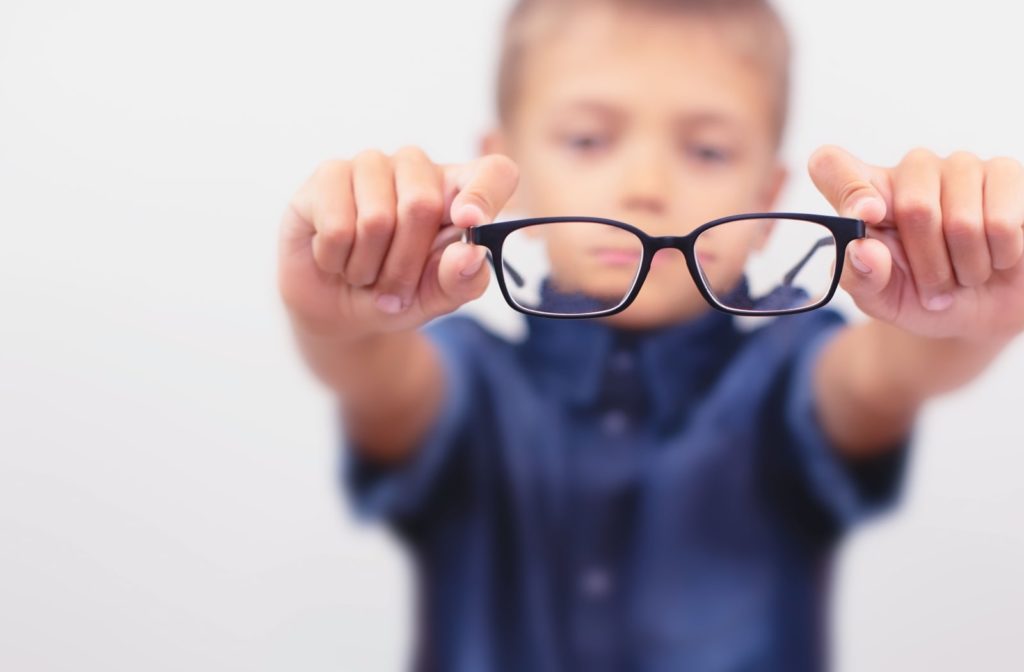Can Myopia Be Prevented?
Not being able to see clearly is a frustrating feeling. It can even be scary or disorienting.
With certain conditions, like myopia, your eyes are unable to bring certain things into focus. This makes daily life unnecessarily difficult.
Fortunately, myopia is a very common condition with plenty of treatment options so you don’t have to struggle with blurry vision.
What is Myopia?
Myopia, or “nearsightedness”, is an eye condition in which you can see objects clearly at a close range, but not at a distance.
This is because the eyeball is too long or the cornea is too curved, causing light that enters the eye to focus improperly on the retina. Your retinas send signals to your brain through the optic nerve, allowing you to see. With myopia, far away objects appear blurry and out of focus.
Myopia affects almost 30% of Canadians. Typically, this visual condition is first diagnosed during childhood. It usually develops over time as your vision can change up until you’re 25 years old. This is why it’s important to see the optometrist for a comprehensive eye exam annually.
How is Myopia Diagnosed?
Usually, people will begin noticing symptoms early in their childhood. They may have trouble seeing the board or discerning what’s happening on TV.
Myopia is generally diagnosed through a regular comprehensive eye exam. The optometrist will perform a few visual tests to help determine your prescription, such as:
- Visual Acuity Test: measures how clearly you can see by using a letter chart
- Eye Muscle Test: evaluates the muscles in your eye that control movement
- Refraction Assessment: determines your prescription to correct your vision
Signs & Symptoms
Myopia signs and symptoms are characterized by:
- Squinting
- Headaches
- Eye strain/fatigue
- Distant objects are blurry
- Trouble reading from a distance
Can I Prevent Myopia?
Myopia can occur spontaneously or due to genetics. Unfortunately, there is no way to prevent myopia. However, it’s extremely treatable and doesn’t have to negatively affect your life.

Myopia Control
Because myopia is so common, there are plenty of treatment options available. The goal of any myopia control treatment or procedure is to help the retinas properly focus light. By correcting this refractive error, you should be able to see clearly up close and far away.
Prescription Lenses
The most common way to treat myopia is with prescription lenses. Prescription lenses counteract the effect of your eyeball shape and cornea curvature, helping to correctly refract (bend) light entering the eye.
You should have a pair of prescription eyeglasses. This is a safe, easy way to correct nearsightedness. There are plenty of styles available for any prescription needs or recommendations.
You can also wear prescription contact lenses. Contacts are a great option to increase flexibility while correcting your vision. However, you should give your eyes a break every now and then from contact lenses. Having eyeglasses allows your eyes to rest without sacrificing clear vision.
Refractive Surgery
Refractive surgeries are another way to treat eye conditions like myopia. These procedures reduce the need for prescription lenses by correcting the cornea in surgery.
Generally, an optometrist won’t recommend refractive surgery until after the age of 25. This is because your prescription can change until you’re about 24 years old, so any surgery before that would be pointless.
The most common types of refractive surgery include:
- LASIK: a laser is used to create a thin flap on the eye to reshape the cornea
- PRK: similar to LASEK, but a laser is used to reshape the cornea
Each surgery has a different recovery time and your candidacy for each operation can vary depending on your eye health, any medical conditions, and medical history. You should talk to your optometrist about whether or not refractive surgery is right for you.
Other Treatments
Some practitioners have found success in slowing the progression of myopia with other treatments, such as:
- More time outside: research shows that safe exposure to UV light in the early stages of life can help reduce the risk of myopia
- Dual focus contacts: new dual focus lenses have been shown to slow myopia progression in children
- Orthokeratology: rigid, gas-permeable contacts help to maintain the shape of the eyeball, preventing myopia from progressing
- Atropine: with doctor approval, this topical medication has been effective at slowing the progression of myopia is certain cases
You should discuss any of these remedies with your optometrist first. You always want to practice caution when it comes to eye health.
What Else Can I Do?
Researchers are always looking for ways to slow and stop the progression of myopia. While there are some studies that point to other natural remedies, the best way to control your myopia is by scheduling and attending annual eye exams with your optometrist.
Don’t be afraid to ask questions or raise concerns about your vision. Your eye health is important to us, and ensuring you have sharp, comfortable vision is our priority.



